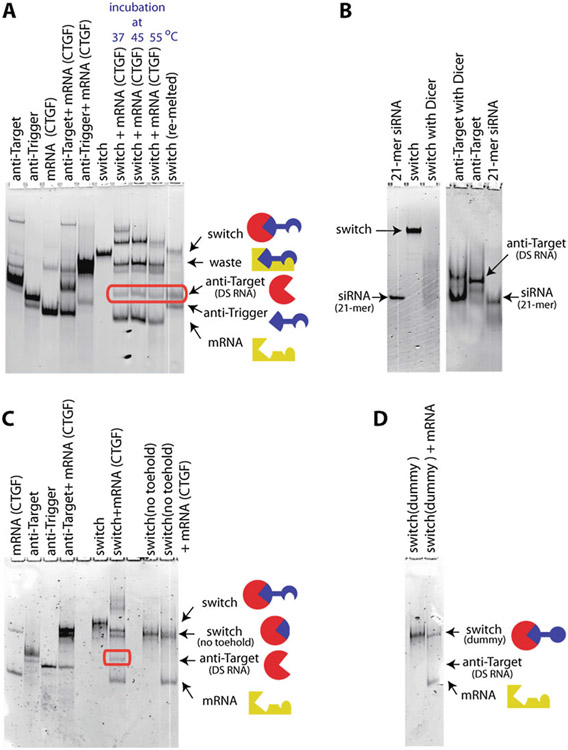Fig. 4.
Total staining RNA native PAGE results demonstrating the proper assembly and function of the RNA switch. (a) Lanes 1–5 contain molecular controls, including various combinations of anti-target strand, anti-trigger strand and mRNA fragment. The lane labeled “switch” corresponds to the gel-purified switch, assembled from anti-target and anti-trigger strands. Lanes 7–9 demonstrate for several temperatures that the RNA switch releases the functional anti-target RNA in the presence of the trigger mRNA fragment. (b) Dicer processing of the RNA switch. Lanes 1 & 6: control of 21-mer siRNA. Lanes 2–3 show that Dicer can degrade the assembled 2-stranded switch. The degradation products do not correspond, however, to distinct bands (lane 3). Lanes 4–5 demonstrate that the Dicer enzyme processes the anti-target strand into a 21-mer siRNA strand. (c) A version of the RNA switch where the anti-trigger strand has no toehold does not lead to the release of the functional anti-target strand. (d) Similarly, a version of the RNA switch where the anti-trigger strand has a toehold sequence with scrambled (i.e., randomized) nucleotide content does not lead to the release of the functional anti-target strand. Adapted and reprinted with permission from [18], copyright 2016 American Chemical Society

